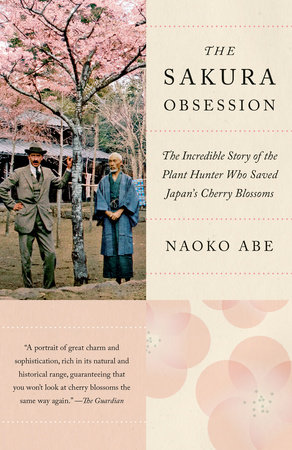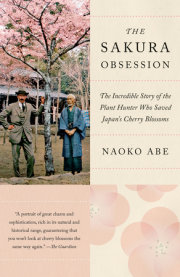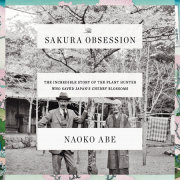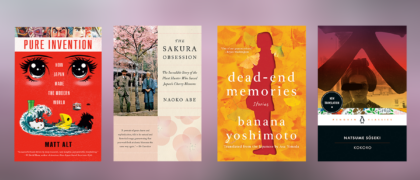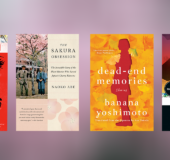Part One
The Birth of a Dream 1. Family Ties Years before the cherry blossoms charmed Collingwood Ingram, there lived a pure white albino jackdaw called Darlie.
Darlie lived in Collingwood’s father’s hat, in a cupboard inside the hallway of the family’s luxurious eleven-room bungalow in Westgate-on-Sea, an English seaside town. Within the hat, the bird had fashioned a nest using fur pulled from Collingwood’s mother’s sable cap and bedroom slippers. In the nest, the jackdaw, drawn as she was to shiny objects, had stored a silver pen and some forks.
When a servant rang the gong to announce meals, Darlie flew to the dining room and hopped around the table, helping herself to morsels from each plate. Joining Darlie on these culinary circuits were four albino, or leucistic, sparrows – Isidor, Tiny, Wildie and Zimbi – along with Albine and Bil-Bil, two pink-eyed albino blackbirds that loved scoffing hard-boiled eggs. There were at least a dozen other albino birds in the house, including thrushes, a hedge sparrow, a redpoll, a starling and a swallow.
The genetic mutation that these birds carried left them with poor eyesight, poor hearing and an ever poorer chance of finding a mate, and their survival outdoors was not assured. So Collingwood and his mother, Mary, kept the birds indoors, where they lived as part of the family, even travelling with them on overseas trips. When Darlie died, Collingwood and Mary set aside a corner of a cabinet in her memory, in which they placed photographs of her, five of her eggs in cotton wool and a brooch containing her feathers. John Jenner Weir, a friend of Charles Darwin and a significant inspiration to the young Collingwood, would call Darlie ‘the most charming bird it has ever been my fate to meet with’.
History doesn’t record whether Jenner Weir had any comment about the Ingrams’ other compulsion: Japanese Chin dogs. Bred and prized by Japanese nobility and samurai lords, these flat-faced, wide-eyed pets resembled Persian cats in many ways. Having been brought to England after Japan opened its doors to the West in the 1850s, the tiny dogs became exotic fixtures in moneyed households throughout Europe. Queen Alexandra, for instance, who had married the future King Edward VII in 1863, had been given a Chin soon after her wedding and had helped to popularise the breed. The Ingrams so loved these dogs that at Westgate-on-Sea, their second home, they kept as many as thirty-five Chins at one time.
Mary Ingram and some of her Japanese Chin dogs Each Chin had distinct variations. Most were black and white, but others were red and white, or gold and black. After dinner, according to Collingwood Ingram’s cousin, Edward Stirling Booth, the Chins were ‘brought in like a set of children into the drawing room for a short time with two dog nurses in attendance. The dogs used to have very particular habits with regard to meals. Every dog had to be completely indulged. Occasionally one little dog would be rushed out and brought back again, and then another one would be rushed out and brought back again. This was another thing which visitors had to put up with.’ Booth also noted the presence in the Ingrams’ extensive garden of an African wildebeest.
Even in Victorian Britain, where the foibles of the wealthy were generally indulged, the Ingrams’ collections marked them as atypical. And there was no doubt, among the residents of Westgate-on-Sea, that the Ingrams were unusual. Unusually wealthy, too. The family head was Collingwood’s proud father, Sir William James Ingram, the Liberal Party’s Member of Parliament for Boston, Lincolnshire. He was also managing director of
The Illustrated London News, one of Britain’s most influential and popular newspapers. Willie, as his friends called him, was an energetic big thinker, much like his father Herbert, the newspaper’s founder. Sir William’s many critics had other descriptions for him, considering him arrogant, litigious and unforgiving, as indeed they had his father. Further detractors included Sir William’s five sisters and his mother, Ann, whose remarriage in 1892 at the age of eighty would plunge the family into open warfare.
Sir William’s wife, Mary Eliza Collingwood Ingram, was an Australian whose accent had been smoothed out by elocution lessons in London. The couple, both passionate about birds and the natural world, had met in London and married in November 1874 at Christ Church, Paddington. Their three boys, who called their parents Min and Pids, completed the quintet. The eldest, Herbert or Bertie, and his brother, Bruce, attended an elite boarding school, Winchester College, their father’s alma mater.
Collingwood, the baby of the family and a sickly child, had never attended school. So while Bertie studied Virgil’s Aeneid, Collingwood roamed the countryside, studying birds – wagtails and warblers, whinchats and wrynecks. And while Bruce learned about
Whistler’s Mother and Constable’s
The Hay Wain, Collingwood learned to whistle the
whit-whit call of the quail in the marshes of East Sussex. From his earliest childhood, birds were Collingwood’s fixation. At the age of three, his Norwegian nurse had held him over a shrub to look into a hedge sparrow’s nest containing a clutch of turquoise-blue eggs. ‘The study of birds,’ he later recalled, ‘and in particular the study of their nests and young became an obsession with me – an obsession that persisted for at least half of my life.’
Nature was the boy’s religion, and Darwinism his creed. And one day in 1891, quite by chance, he ran into John Jenner Weir, one of Britain’s most accomplished ornithologists and botanists. That meeting, Ingram recalled, was a transformational, almost evangelical experience: ‘The manner in which I came to know that stranger has remained an inexplicable episode in my life.’
I was only about 10, a shy introspective child who in normal circumstances would have never dreamt of accosting a perfect stranger. Yet that was exactly what I did. I was wandering about the countryside by myself in search of birds, when I saw coming towards me, also alone, an elderly gentleman dressed from head to foot in urban black. He might have been anything – a lawyer, a doctor, a businessman.
There was therefore no ostensible reason why I should have suddenly felt irresistibly drawn towards the man. Was it telepathy or was it intuition? I know not. Anyhow, something seemed to tell me that here at last I had found a kindred spirit. Impelled by an uncontrollable urge, I walked straight up to him, and without so much as a word of explanation, bluntly asked him if he was interested in birds – a fatuous question since I already instinctively knew the answer.
In fact, Jenner Weir kept birds and butterflies in an aviary in his garden in south London, where he experimented to see which variety and colour of caterpillars the birds would eat. Darwin cited a number of Jenner Weir’s observations in
The Descent of Man and other books. For three formative years after they met, Jenner Weir lent Collingwood materials and books about the natural world. He died suddenly in March 1894, aged seventy-one, when his young admirer was just thirteen, but his influence lasted throughout Ingram’s life. In his final publication,
Random Thoughts on Birds, self-published when he was ninety-eight years old, Ingram wrote of his ‘deepest gratitude for his [Jenner Weir’s] encouragement’.
Collingwood was already passionate about collecting all varieties of fauna that interested him. His meetings and correspondence with Jenner Weir further encouraged those pastimes. Diverse species must be protected and preserved: that, to Collingwood, was a given. Indeed, it was variety that made life so rich and fulfilling for him.
Darwin’s theories of evolutionary adaptation through natural selection – the ‘survival of the fittest’ – which Collingwood discussed with Jenner Weir, argued against the natural survival of the family’s albino birds, yet survive they did, at least in small numbers; just as Collingwood himself had defied the odds at his birth and would live for more than 100 years.
Copyright © 2019 by Naoko Abe. All rights reserved. No part of this excerpt may be reproduced or reprinted without permission in writing from the publisher.

